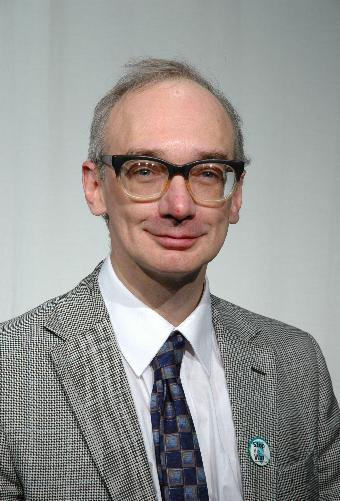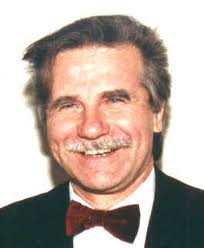|
|
Invited Speakers (castback 2012)
The new invited speakers for Mendel 2013 will be announcement during March.
| Genetic Improvement Programming |
 |
Dr. William B. Langdon
Research Fellow
University College London
United Kingdom |
|
Evolutionary computing, particularly genetic programming, can optimise
software and software engineering, including evolving test benchmarks,
search meta-heuristics, protocols, composing web services, improving
hashing and garbage collection, redundant programming and even
automatically fixing bugs. Often there are many potential ways to
balance functionality with resource consumption. But a human
programmer cannot try them all. Also the optimal trade off may be
different on each hardware platform and it vary over time or as
usage changes. It may be genetic programming can automatically
suggest different trade offs for each new market.
Dr. Langdon worked in the power supply industries and as a software
consultant before returning to university to gain a PhD on evolving software with genetic programming.
Bill has worked both on application and theoretical foundations of GP and has written three books on GP
() and given presentations in five continents.
Applications include scheduling, e-commerce, data mining, evolving combinations of classifiers (MCS),
swarm systems (PSO) and Bioinformatics (eg non-human contaminants in the human genome databases).
Whilst theory includes GP schema theory, markov analysis, the halting probability and elementary fitness landscapes.
Recent work includes using grammar based GP to re-engineer nVidia CUDA software.
More information can be found at
here.
|
| Nature-Inspired Metaheuristics: Theory and Applications |
 |
Dr. Xin-She Yang
Senior Research Scientist
National Physical Laboratory
United Kingdom |
|
Nowadays, nature-inspired metaheuristics have become an integrated part of soft computing and computational intelligence, and they have been applied to solve a wide range of tough optimization problems. Seemingly simple algorithms can often deal with complex, even NP-hard, optimization problems with surprisingly good performance and results. In this talk, I will review some of the recent metaheuristic algorithms such as firefly algorithm and cuckoo search and their differences from particle swarm optimization and other metaheuristics. We will try to analyse the key components of metaheuristic methods in terms of convergence and search characteristics. We will also give a few examples in real-world applications and suggest some open problems for further research.
Dr Xin-She Yang received his DPhil in Applied Mathematics from University of Oxford, then worked at Leeds University and Cambridge University for a few years, and now is a Senior Research Scientist at National Physical Laboratory. He is a Guest Professor at Shandong University and Harbin Engineering University. He has authored a dozen books and published more than 110 papers. He is the Editor-in-Chief of Int. J. Mathematical Modelling and Numerical Optimisation (IJMMNO, Inderscience), serves as an editorial board member of several international journals, including Elsevier's Journal of Computational Science (JoCS). He is also the vice chair of the IEEE CIS task force on business intelligence and knowledge management.
More information can be found at here.
|
| Differential Evolution: from Theoretical Analysis to Practical Insights |
 |
Prof. Daniela Zaharie
Faculty of Mathematics and Computer Science
West University of Timisoara
Romania |
|
Differential Evolution (DE) is currently one of the most used population based stochastic metaheuristic. Its popularity is mainly due to its simplicity and effectiveness in solving various types of problems, including multi-objective, multi-modal, dynamic and constrained optimization problems. Since Rainer Storn and Kenneth Price proposed the first DE versions, more than fifteen years ago, dozens of differential evolution flavors, involving changes in the main operators, hybridization with other optimization methods, automated parameters tuning, (self)-adaptation schemes, structured populations and so on, have been proposed.
Despite the large number of reported applications of DE and of the huge volume of experimental results it is still difficult to give answers to questions like "Why is DE successful for a class of problems and why does it fail for other problems?"
or "How could we control the DE behavior?". The theoretical analysis of DE is still well behind the experimental results, most of the current knowledge on differential evolution being based on empirical observations.
This presentation will review the existing theoretical results concerning the convergence properties of DE and the influence of the choice of DE parameters on the population evolution and will focus on the usage of these results in deriving practical insights for designing effective and efficient optimization tools.
Prof. Daniela Zaharie received her PhD degree in Probability and Statistics at the West University of Timisoara, Romania in 1997 and currently is professor at the Department of Computer Science of the same university. Her main research interests are: evolutionary computing, machine learning, data mining, statistical modelling, image processing and high performance computing.
More information can be found at here.
|
| Emergent Phenomena in Evolution of Shapes and in Problem Solving |
 |
Prof. Jiri Bila
Department of Instrumentation and Control Engineering
Czech Technical University in Prague
Czech Republic |
|
The proposed lecture maps the emergent phenomena in the following fields:
– In the evolution of natural shapes and processes.
– In multi agent systems.
– In the behavior of the ant colonies.
– In urban and non urban development of large cities.
– In conceptual design.
– In problem solving.
The lecture contains a part of the essential and breakthrough opinions to the emergence and emergent phenomena till nowadays. It introduces Complex Systems as one of the field appropriate for investigation of conditions of emergent phenomena initiation. Principal obstacles that obstruct a real investigation of emergent phenomena in the level of nowadays analytical science are introduced. The cases of emergent phenomena in problem solving are illustrated.
Prof. Jiri Bila finished his study on Faculty of mechanical engineering, CTU Prague in 1969. His CSc. thesis in the field of Technical Cybernetics he defended in 1977, and in 1987 he achieved the degree DrSc in the same field of science. He is currently full professor of Technical Cybernetics in Faculty of Mechanical Engineering, CTU in Prague, since 1989. The kernel of his scientific activities is in analysis of non-linear systems with deterministic chaos, in application of artificial intelligence and neural networks for biosignals and in intelligent methods in diagnostics. He is author and co-author of 17 grant projects in various levels 1991-2011, author/co-author of 5 books and over 250 journal and conference papers.
More information can be found at here.
|
Special Invited Talk
| On the nature of the electron and other particles |
 |
Dr John G Williamson
Senior Lecturer
University of Glasgow
Scotland |
|
For many thousands of years man has wondered about the underlying nature of the universe. Much progress has been made but many mysteries remain. One such is the underlying structure of the “elementary” particles. The quantum-mechanical spin of the electron would suggest, for example, that it must have an underlying structure. In one of our most advanced theories however, quantum electrodynamics, it is taken to be structureless. In ordinary quantum mechanics it has a wave nature, but what this wave looks like is very variable, large in the solid state, miniscule in high-energy scattering. How does it do this? What is it? What is in there? One gets used to not understanding. This lack of understanding is even raised to the level of principle on which further development is based (the uncertainty principle). The talk will outline a new theory, developed using a new kind of mathematics, which allows the underlying structure of elementary particles to be considered.
Dr. John Williamson worked for many years at CERN. He joined the advanced theoretical and experimental physics group at Philips in 1985 where he was responsible for the design of the quantum point contact and the worlds first single electron pump. These devices were revolutionary at the time and continue to be the subject of much experiment even now. Since 1991 he has been working on the development of a new theoretical basis where light and matter may be treated on the same footing. He has (co) authored around a hundred papers.
More information can be found at
here.
|
|






